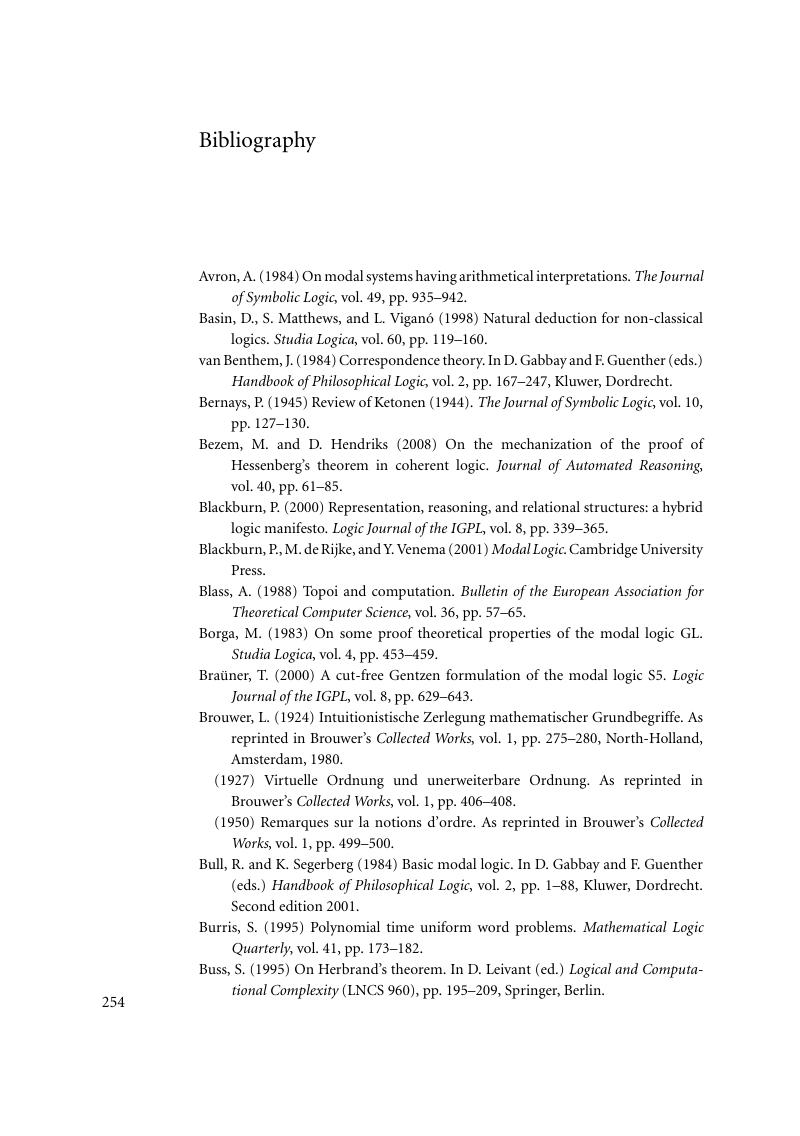Book contents
- Frontmatter
- Contents
- Preface
- Prologue: Hilbert's last problem
- 1 Introduction
- PART I PROOF SYSTEMS BASED ON NATURAL DEDUCTION
- PART II PROOF SYSTEMS BASED ON SEQUENT CALCULUS
- PART III PROOF SYSTEMS FOR GEOMETRIC THEORIES
- PART IV PROOF SYSTEMS FOR NON-CLASSICAL LOGICS
- Bibliography
- Index of names
- Index of subjects
- References
Bibliography
Published online by Cambridge University Press: 07 October 2011
- Frontmatter
- Contents
- Preface
- Prologue: Hilbert's last problem
- 1 Introduction
- PART I PROOF SYSTEMS BASED ON NATURAL DEDUCTION
- PART II PROOF SYSTEMS BASED ON SEQUENT CALCULUS
- PART III PROOF SYSTEMS FOR GEOMETRIC THEORIES
- PART IV PROOF SYSTEMS FOR NON-CLASSICAL LOGICS
- Bibliography
- Index of names
- Index of subjects
- References
Summary

- Type
- Chapter
- Information
- Proof AnalysisA Contribution to Hilbert's Last Problem, pp. 254 - 261Publisher: Cambridge University PressPrint publication year: 2011



